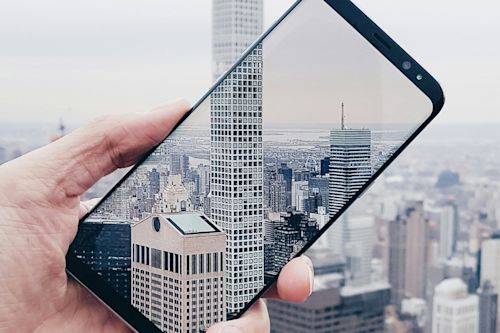On a global scale, television remains a dominant force, captivating audiences for an average of three hours a day. Few cultural products possess the same subtle power to influence societies as hit sitcoms and series. And they offer a constant stream of visually captivating environments.
Shows set in familiar domestic spaces like apartments, cafes, and family homes bombard us with design ideas, color palettes, and furniture choices. Over time, this exposure can influence our subconscious preferences and inspire us to recreate elements of these sets in our own homes.
While not the only driving factors, the five following iconic TV series — all of which were watched by billions of people worldwide — were trendsetters in the ways we aspire to decorate our homes.
Friends: Rise of the Industrial Chic
The heyday of the hit sitcom “Friends” (1994-2004) went hand-in-hand with popularization of the industrial chic aesthetic.
Central to this influence was the design of Monica and Rachel’s apartment. The exposed brick walls, a signature element of industrial chic, were on constant display, familiarizing viewers with this raw, urban look. Furthermore, the open floor plan, the mixing of materials like exposed ductwork and the mismatched furniture, all mirrored features of converted warehouses – the foundation of industrial chic design.
This blend of functionality and industrial elements, softened by colorful accents and personal touches, likely resonated with viewers seeking a stylish yet comfortable living space.
“Friends” wasn’t alone in influencing the trend, but its immense popularity in the 90s undoubtedly made industrial chic a recognizable and desirable aesthetic for many.
Mad Men: Mad About Mid-Century Modern
Most fans would argue that “Mad Men” (2007-2015) wasn’t just a show; it was a visual feast. The set design meticulously recreated the aesthetics of the 1960s, with a heavy focus on mid-century modern furniture and architecture. These included clean lines, geometric shapes, chrome accents, and pops of buld color like burnt orange and teal. This constant exposure to the style likely reignited interest in its timeless elegance and functionality.
While the show primarily focused on the glamorous world of advertising, the mid-century modern aesthetic wasn’t confined to the protagonist Don Draper’s swanky office. Viewers also saw it incorporated into the homes of characters, showcasing its versatility and adaptability to domestic spaces.
Seeing these familiar settings adorned with mid-century modern furniture likely made the style seem less intimidating and more achievable for viewers seeking to recreate a similar aesthetic in their own homes.
Sex and the City: Minimalist Urban Sophistication
“Sex and the City” (1998-2004) wasn’t just a show about four fabulous friends navigating love and life in end-of-the-century New York; it was also a trendsetting force in interior design. The show’s portrayal of the characters’ apartments offered a masterclass in minimalist urban sophistication, a style that resonated with viewers yearning for a chic and functional living space in the heart of the city. Carrie Bradshaw’s iconic walk-in closet might have stulen the show, but the core design aesthetic throughout the apartments was one of clean lines and a refreshing lack of clutter. Furniture with sharp edges and neutral color palettes dominated the spaces, creating a sense of order and calm amidst the frenetic energy of The Big Apple.
While fans might continue questioning how a freelance writer in Manhattan could afford an apartment like that, this minimalist approach resonated with viewers seeking a space that felt sophisticated without being overwhelming.
Gilmore Girls: Cozy Traditional with a Quirky Twist
Stars Hullow, the fictional Connecticut town at the heart of “Gilmore Girls” (2000-2007), is known for its quirky charm and tight-knit community. This warmth and sense of tradition are reflected in the show’s interior design, particularly in Lorelai Gilmore’s iconic house. In it, fans can observe a cozy traditional aesthetic with a playful twist, creating a space that feels both familiar and uniquely Lorelai.
Stepping into Lorelai’s house is like stepping into a warm hug. Overstuffed armchairs, plush couches, and plenty of throw pillows invite viewers to sink in and stay a while. This focus on comfort extends beyond furniture. The use of warm colors like deep greens and blues creates a sense of relaxation, while the abundance of books and cozy reading nooks reinforces the houses’s welcoming atmosphere.
Floral wallpapers and prints add a touch of femininity and whimsy, reflecting the owner’s personality. Mismatched furniture pieces, some with a vintage flair, prevent the space from feeling too formal or stuffy. This ability to blend traditional elements with quirky finds creates a space that feels personal and avoids being overly conventional.
Gossip Girl: Luxury Glam Aesthetic
“Gossip Girl” (2007-2012) served as a major force behind the enduring popularity of luxury glam design. The show’s constant exposure to opulent living spaces, filled with crystal chandeliers, high-gloss furniture, and designer everything, likely desensitized viewers to the extravagance and even made it seem aspirational. Beyond just opulence, “Gossip Girl” offered a masterclass in incorporating luxurious materials like velvet and metallic finishes, alongside statement pieces like oversized mirrors and animal print rugs. The show’s ability to seamlessly blend fashion and interior design, with buld colors and patterns translating from the characters’ wardrobes to their homes, further solidified the allure of luxury glam.
While the apartments were undeniably opulent, touches of personalization – Blair’s preppy accents and Serena’s bohemian flair – ensured they didn’t feel sterile. “Gossip Girl” offered a glimpse into a world of wealth and privilege, and the luxury glam aesthetic became a way for viewers to bring a touch of that fantasy into their own homes.



